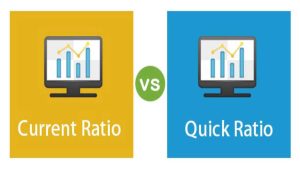The accounts receivable turnover ratio, also recognized as the debtor’s turnover ratio, is a productivity ratio that calculates how much a business collects income – and thereby how well it uses its assets. The accounts receivable turnover ratio counts the number of days a business receives its average accounts receivable during a given timeframe.
Accounts Receivable Turnover Ratio Formula

Accounts Receivable Turnover Ratio = Net Credit Sales / Average Accounts Receivable
Net credit sales are those of which the money is received later. The net credit sales can be calculated as.
= Sales on credit – Sales returns – Sales allowances.
Average accounts receivable – The number of beginning and ending accounts receivable for a specified timeframe divided by two.
Accounts receivable turnover ratio is a performance ratio that measures a business’s financial and operating output. A high ratio is advantageous because it means that the business’s accounts receivable accumulation is regular and successful. A large accounts receivable turnover also means that the business has a high-quality client base that pays their bills on time. A high ratio can also indicate that the firm has a conservative credit policy, like net-20-days or perhaps even net-10-days.
A poor accounts receivable turnover ratio indicates that the business’s collection mechanism is subpar. This may be as a result of the firm offering credit terms to uncreditworthy clients who are having financial problems.
Furthermore, a low ratio can mean that the firm is overextending its credit policies. It is occasionally used in earnings management, whereby administrators propose a very lengthy credit policy in order to attract extra revenue. Because of the time value of revenue, the longer a corporation takes to earn on its credit transactions, the more cash it ultimately spends, or the less expensive the business’s sales are. As a result, a low or diminishing accounts receivable turnover ratio is deemed harmful to a business.
It is beneficial to equate a business’s ratio to that of its rivals or related firms in the same industry. Instead of analyzing the percentage in isolation, gazing at a business’s ratio in relation to that of comparable companies would offer a more meaningful comparison of the business’s results. For example, if the average ratio for its sector is two, an organization with a ratio of four, which is not necessarily a “big” figure, would tend to be doing significantly better.
Main points to remember in Accounts Receivable Turnover Ratio
- The accounts receivable turnover ratio is a productivity ratio that calculates the number of times a business receives its total accounts receivable over a course specific time period.
- Taking 365 and dividing it by the accounts receivable turnover ratio produces the accounts receivable turnover in days, which would be the total amount of days it requires clients to settle their obligations.
- A high turnover ratio is beneficial because it indicates that the business’s collection mechanism is successful, that the business has a high-quality client base, and that the business follows a cautious credit policy.
- A poor accounts receivable turnover is detrimental to a business and may indicate a slow collection mechanism, extending payment terms to problematic clients, or increasing the credit policies for an unreasonably long period of time.



